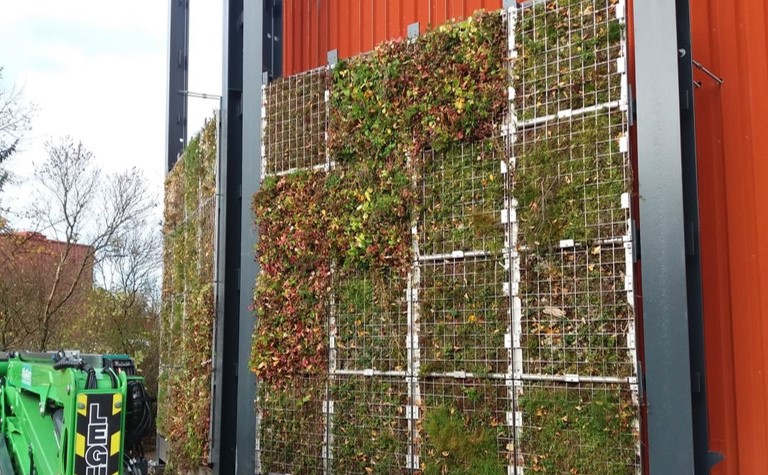
Tampere’s green wall: the northernmost of its kind
- Wed, 15/12/2021
The City of Tampere has recently finished the first construction phase of the novel green wall that is located on an old wastewater treatment plant in the Viinikanlahti district. The green wall is the first of its kind to be constructed this far up north, and the city will study its performance in the harsh Finnish climate to enable the replication of this nature-based solution on other public and private buildings in the city.
The green wall is currently four meters high, but the plan is to increase it to eight metres after the winter. The structure is made of steel and consists of four vertical pillars with 64 plant boxes in between. The wall plants are made up of local species that live on top of rocks and that survive in cold conditions. Additionally, the city has used forest peat and plants from a new city district construction site for the green wall. The boxes with plants were left to grow in a horizontal position during the summer, and were only recently installed to the wall.
The green wall has a mobile structure as it eventually will be placed on the wall of a new pumping station that will be built in the area in the next years. The new pumping station will be built when the wastewater treatment plant is moved from its current central location to the outskirts of the city, and Viinikanlahti becomes a new housing district. The irrigation water for the wall is currently collected from a lake water well, but the new pumping station will allow for rainwater to be harvested from the roof and used for irrigating the wall. The metal plant boxes are designed to allow the irrigation water to drain from one box to the next one.
BENEFITS AND MONITORING
The green wall is located along an important ecological corridor in the city and is one of the elements supporting the biodiversity of that corridor. The wall vegetation has been selected from local species to create living habitats for pollinator insects and the city will monitor the pollinators on site.
The carbon storage and water management capacity of the green wall will also be monitored. The city will, for example, study the amount of irrigation water needed, the condition of the plants, the amount of water that stays on the green wall, and the amount of water that eventually drains from the bottom. The boxes have humidity sensors that will support this work. Simultaneously, the city is investigating whether the water is cleared as it flows through the green wall.
The green wall also has an aesthetic value and as a popular walking and bicycle route passes by the wall, the city hopes that the diverse wall will help improving the wellbeing of city dwellers who pass by or live in the dense area.